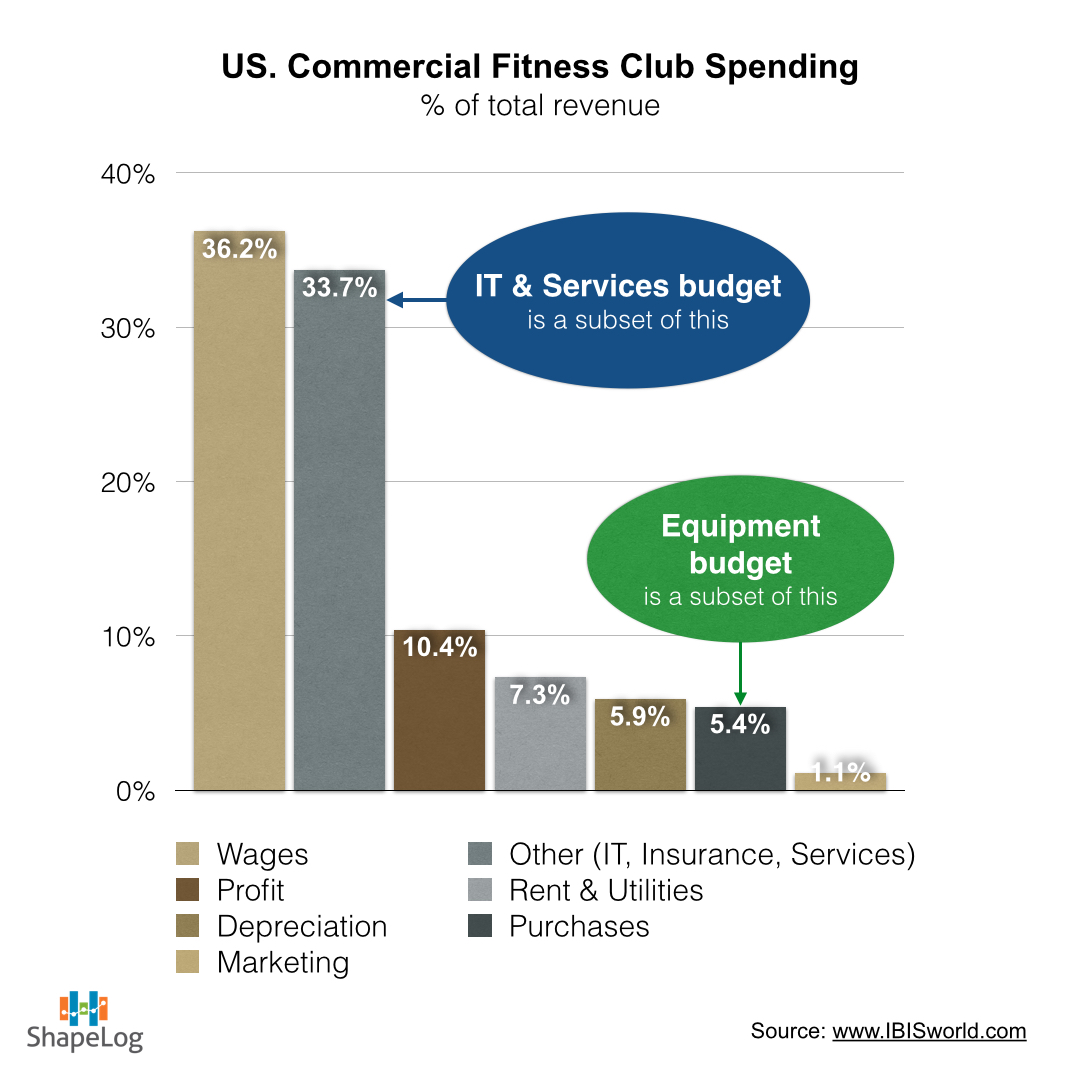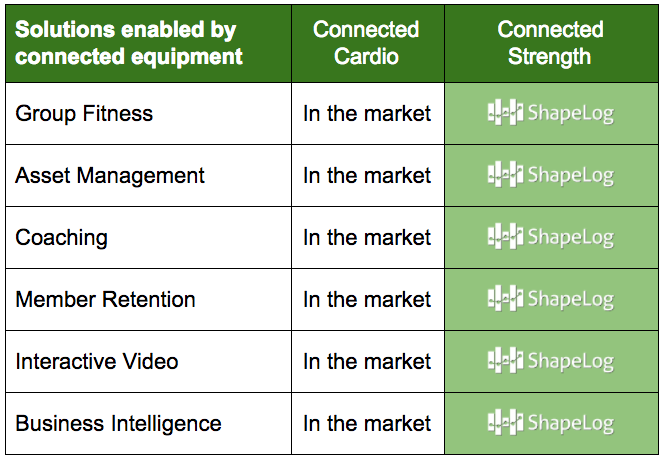Why Fitness Equipment Sales is the Hardest Job

Selling fitness equipment is hard because commercial clubs spend relatively little on equipment. As you can see in the chart below, commercial clubs spend way more on services and IT. That makes it hard for fitness equipment salespeople to capture the attention of a club owner, and really hard to win the sale.
There’s a Better Way: Sell Equipment + Services
Commercial fitness equipment is a business-to-business sale evaluated on the incremental revenue generated against the incremental cost incurred. Since members buy access to all of the equipment, it’s really hard to calculate the incremental value generated by a chest press machine or a fleet of spin bikes. It’s an expense with a benefit that’s hard to calculate.
Experiences and services – like new software or virtual classes – are more likely to be viewed as revenue-generating opportunities for the club. Everybody is more willing to invest in things that can be directly tied to revenue-generating activities, especially when these investments are sold or leased on a monthly basis. The risk is low and the payback on the investment is immediate.
The fact that some companies are building profitable businesses selling only services and IT solutions to clubs is a signal to fitness equipment manufacturers that the customers want more of these products. If fitness equipment sales people can bundle revenue generating services with their equipment, club owners get the best of both worlds and fitness OEMs gain access to a larger, adjacent budget.
Fitness equipment salespeople are best positioned to recognize and fill this need.
Low Hanging Fruit: Converting Dumb Assets to Revenue-Generating Units
ShapeLog helps fitness equipment manufacturers sell new services to fitness clubs by converting dumb, legacy assets into revenue generating units, just like connected cardio equipment and wearables opened up new service products (think: SoulCycle, OrangeTheory).
Our API allows club owners to use their existing software and data platforms to gain a more complete view of their equipment and their members. Members get new experiences, clubs make better decisions, and everybody makes more money.
‘Connected Strength’ Has Arrived
Here are the historical reasons the weight room isn’t currently ‘connected’ the way cardio is:
-
- Data is hard to collect and standardize (lots of different exercise types)
-
- Machines aren’t powered & nobody wants to change batteries
-
- Authenticating at every machine makes for an annoying workout
- Fragmented preferences – no consensus on the ‘best’ way to work out
There was no way to clear these hurdles in 2005, 2008, 2012, or even 2015. 2017 is the time for two reasons. First is the convergence of cloud storage, wireless communications, machine learning, consumer preferences, and UX design. We’re in a golden age.
More importantly, hype around tech is receding. The Fitbit backlash is in full swing and people are asking, “so what?”. What’s all this new data really getting me. And that’s bringing experience design and simplicity forward in the conversation.
When we talk to OEMs and fitness clubs today, they concede that our patented hardware works – they’re jaded about technology and are more interested in what the technology does for them and their customers. What that experience looks like. This is why quality solutions are emerging.
That conversation has informed our approach to connected strength:
-
- Low cost, elegant hardware streams data from all selectorized equipment. Retrofit or first-fit
-
- Battery life syncs with existing equipment maintenance cycles (1+ years)
-
- By analyzing the data, ShapeLog identifies each user automatically after each set. No more authentication required.
- Most importantly, we’re taking an API-centric approach that leaves the door open for others to help us answer the ‘So what?’ question. Anybody that works with us can build on our API.
Fitness equipment manufacturers and club owners: The connected strength services market is wide open. Let’s start building and selling the revenue-generating services people want to buy.
